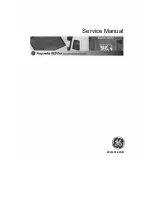
The meter is considered “permanently connected equipment” and requires a
disconnect means (circuit breaker, switch, or disconnect) and overcurrent
protection (fuse or circuit breaker).
The meter draws up to 100 mA, therefore the rating of any switches, disconnects,
fuses, and/ or circuit breakers is determined by the wire gauge, the mains voltage,
and the current interrupting rating required.
The switch, disconnect, or circuit breaker must be located near the meter and be
easily operated .
Use circuit breakers or fuses rated for 20A or less.
Use grouped circuit breakers when monitoring more than one line.
The circuit breakers or fuses must protect the mains terminals labeled L1, and L2. In
the rare cases where neutral has overcurrent protection, the overcurrent protection
device must interrupt both neutral and the ungrounded conductors simultaneously.
The circuit protection / disconnect system must meet all national and local
electrical codes.
Installing and Connecting the Meter
Mount the meter on a wall or pole using the supplied bracket.
The meter should be mounted vertically, with the glands facing downward.
To mount the meter:
1. Loosen the 4 Allen screws of the enclosure and remove the cover.
Figure 9: Meter cover screws
2. Open one of the the bottom conduit drill guides for AC wiring (see Figure 6 below),
taking care not to interfere with any of the internal components. A Unibit drill may
Chapter 2: Meter Installation
13
Energy Meter with Modbus Connection MAN-01-00270-1.3















































